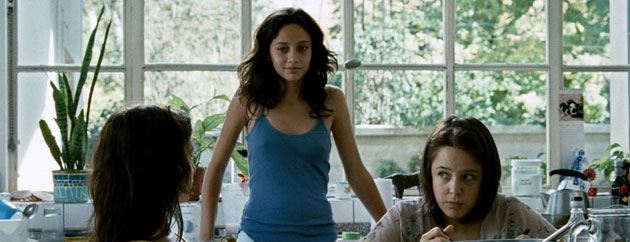
Back To Stay
03 April, 2012Back To Stay (Argentine title: Abrir Puertas y Ventanas) is the story of three sisters living alone in their grandmother’s house. While the reasons for her absence becomes known during the film, the whereabouts of their parents remains a mystery, one of many that make this coming-of-age drama such an alluring film.
This basic premise for the film comes complete with two resonating features; the first is the fact that this is a story about three young sisters living together in a grand Argentine house, something that any sibling can surely relate to; the second being the darker reality that they are living in a post-dictatorship Argentina where their parents have “disappeared.” Any idea that the girls would stick together in such circumstances, especially considering the person in charge of them – their grandmother – has recently passed away, is quickly dispersed as the opposing personalities of the three female protagonists lead to anything but an easy life. Marina is the oldest of the three, and the most responsible; Sofia is obnoxious, often spiteful and unafraid of expressing her views; Violeta is the most passive of them all with an amazing knack for lying around in some of the strangest configurations possible, normally while just wearing pants and t-shirt, her uniform.
The whole film takes place in the house, with just the odd excursion outside to the garden or to neighbour Fernando’s apartment, and it never needs to venture away from their home. It’s a home where all of the sisters manage to conceal so much while always living on top of each other. It’s the unravelling of these mysteries which result in many of the major turning points in the story, which is essentially an examination of the relationship between the three of them and how it develops into something manageable, if never exactly 100% positive.
Great credit for the success of the film must go to director Milagros Mumenthaler for painting such a vivid portrait of life in the house, using the lack of information about the history of the characters as a means by which to look deep into the relationships between the characters. Credit must also be paid for the use of music in the film, which is often used to highlight moments of calm or synergy. In particular, the song that gives the film it’s English title, Bridget St John’s “Back To Stay”, helps create a mesmerising scene which proves to be a centrifuge upon which the film begins to head towards it’s resolution. Out of the three actresses involved Maria Canale should quite rightly gain many plaudits for her depiction of Marina as the strong yet vulnerable older sister.
Back To Stay is a film that will resonate with many people, for the reasons previously mentioned, as well as the nuanced portrayal of the three sisters and their relatationships, and the characterisation of the house itself, which essentially becomes the fourth character in the story, a representation of their grandmother and her legacy. Beautifully paced and filled with unusual musical choices, the result is a complete joy from start to finish and will stay with you long after the credits roll.
Back To Stay is showing as part of the 1st Argentine Film Festival of London, which will be taking place between April 19th-22nd at the Ritzy Picturehouse in Brixton. See argentinefilmfestival.com for more details.
http://www.youtube.com/watch?v=0XMw-4tnJtI
Follow Sounds and Colours: Facebook / Twitter / Instagram / Mixcloud / Soundcloud / Bandcamp
Subscribe to the Sounds and Colours Newsletter for regular updates, news and competitions bringing the best of Latin American culture direct to your Inbox.

